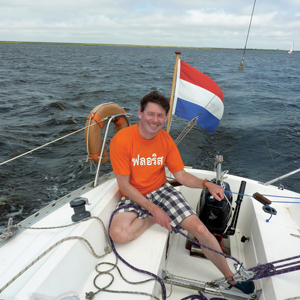 The year 2022 looks promising for (floating) offshore wind
The year 2022 looks promising for (floating) offshore windSeveral governments around the world have recently announced plans to advance the development of (floating) offshore wind projects. The U.S. Department of Energy has issued a report outlining regional and national strategies for accelerating offshore wind deployment and operation in the USA. The majority of offshore wind activity is currently concentrated on the east coast, but the USA has begun to look into other regions as well. The Bureau of Ocean Energy Management, for example, has issued a request for information and nominations to assess commercial interest in, and solicit public comment on, potential commercial wind energy leasing in a proposed area in the Gulf of Mexico. The call area spans nearly 30 million acres (> 12 million hectares) from the Mississippi River to the Texas/Mexico border.
The Dutch government has released a plan that calls for the country’s installed offshore wind power generation to nearly double by 2030. It is now aiming for an additional 10.7GW of offshore wind capacity by 2030. The 10.7GW adds to the 11.5GW already planned by the end of the decade. The total combined goal is now 22.2GW.
Germany’s new coalition government, comprised of the Social Democrats, Greens, and the Free Democrats, has set a target of 30GW of offshore wind capacity by 2030, up from the country’s previous target of 20GW. The coalition intends to build 40GW of offshore wind capacity by 2035, with a goal of reaching 70GW by 2045.
2022 looks like it will become a year of breakthroughs for floating offshore wind. The very first floating wind turbine was installed by Blue H Technologies of the Netherlands off the coast of Apulia, Italy, in December 2007. The 80kW prototype was installed in waters 113 metres deep in order to gather test data on wind and sea conditions, and it was decommissioned at the end of 2008. Windtech International was the first magazine to publish a feature article about this project: https://www.windtech-international.com/editorial-features/worlds-first-floating-wind-turbine
Almost 15 years later, Crown Estate Scotland has announced the results of ScotWind. The offshore wind leasing round in Scottish waters received a total of 74 bids, with 17 successful bidders confirmed. It auctioned 8,600 square kilometres of sea space, which could host almost 25GW of offshore wind. A list of all the winners can be found at https://www.windtech-international.com/projects-and-contracts/scotwind-announces-17-successful-bidders-from-74-contenders. Of the 25GW awarded, 15GW will be floating offshore wind projects.
Recently, the Spanish Council of Ministers has approved the Roadmap for the Development of Offshore Wind and Offshore Energy in Spain. The strategy contains 20 lines of action with the objective of reaching between 1 and 3GW of floating offshore wind power in 2030.
It is expected that France will soon be announcing the results of the auction for a 250MW floating wind farm off the coast of Brittany. Also, Greece and Italy are developing new strategies and legislation that will lead to auctions for large-scale floating offshore developments.
In China, the majority of offshore wind turbines are bottom fixed, but it is likely that floating offshore wind will soon increase now that players like MingYang have entered this area
In China, the majority of offshore wind farms are fixed, but it is likely that floating offshore wind will increase pretty soon as well, now that players like MingYang have entered this area (https://www.windtech-international.com/product-news/mingyang-to-install-its-first-floating-wind-turbine).
Floating wind will also be a central topic at WindEurope’s Annual Event 2022, taking place in Bilbao, Spain, on 5–7 April. The development of (floating) wind projects requires a lot of technological innovation, and in our future issues we will inform you about the latest developments.
Enjoy reading,
Floris Siteur
Publisher
Publisher








